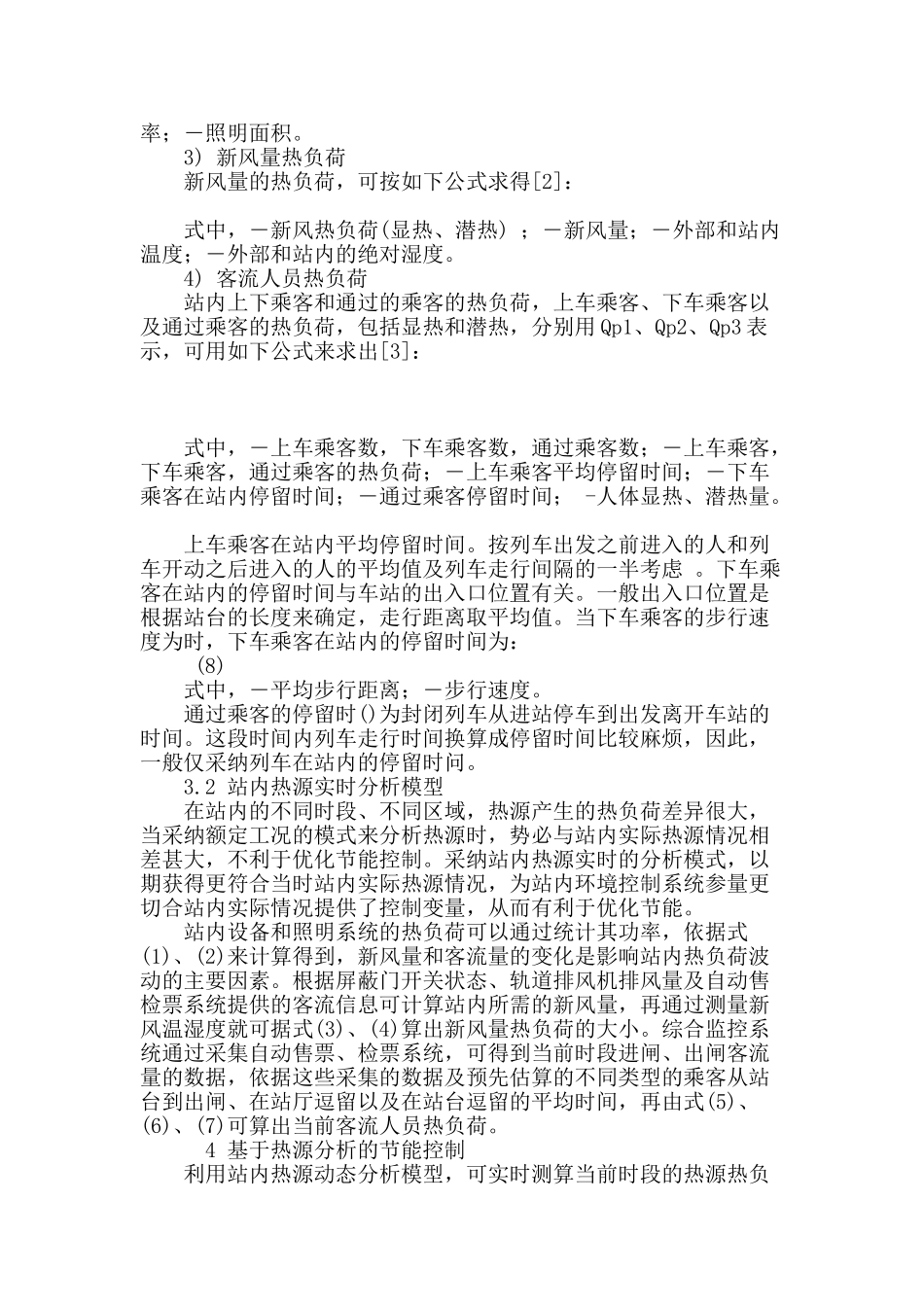基于热源分析的地铁站节能优化控制基于热源分析的地铁站节能优化控制 摘要:本文分析了地铁站热源的组成及特点,并结合地铁既有综合监控等自动化系统,引入并建立了地铁站热源动态分析模型,可实时测算地铁站的扰动热源,在对地铁环控系统设计前馈控制环节后,以测算的扰动热源作为系统的干扰输入量,经 PI 反馈控制即可使空调冷负荷主动跟随站内热源的实际变化,从而改变了以往按额定工况非节能运行控制方式。 关键词:地铁站热源 分析模型 前馈控制 节能运行 Abstract: This paper analyzes the composition and features of Metro station heat source, and combined with Metro integrated automation monitoring system, introduced and established Metro station heat source dynamic analysis model, can measurse disturbance heat source of Metro station in real-time, to design feedfoward control on Metro environmental control system, estimated the measuring disturbance heat as disturbance input system, by PI feedback control to make air -conditioning cooling load activly following with the actual changes of station heat, so then change the past, according to the rated condition not energy-saving operation control method. Key words: Metro station heat source; analysis model; feedfoward contorl; energy-saving operation 中图分类号:TE08 文献标识码:A 文章编号: 1 前言 城市地铁站是城市公用设施中的耗能大户,同时也是节能大户,解决节能问题是目前正在大力探究的一个课题。地铁站建成后一般运行都在几十至百年之间,因此,一个相当细小的节能措施都显得相当重要。目前国内地铁站内的设备基本上采纳定功率运行模式。由于在不同的时段,地铁站的环境参量变化大,站内设备采纳额定工况运行模式不利于节能。由信号、屏蔽门、自动售检票等与综合监控系统组成的热源实时监测系统,可实现对地铁站的热负荷干扰的测算。通过引入基于热源分析的前馈控制策略,使站内设备运行主动适应站内实际所需,从而实现了地铁站的节能优化控制。 2 地铁站热源组成简介 目前国内,新建和在建的地铁站,基本上是采纳了屏蔽门系统,其站内的热源主要有以下两类。其热源组成如下图所...


